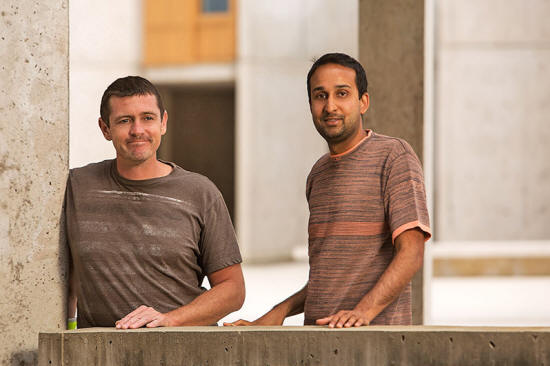|
July 06, 2017
from
Salk Website how plants use the same rules to grow under widely different conditions (for example, cloudy versus sunny), and that the density of branches in space follows a Gaussian ('bell curve') distribution,
which
is also true of neuronal branches in the brain.
3-D scanning reveals similar statistical laws at work in both shoots and neurons, outlines a new report.
The new work (A Statistical Description of Plant Shoot Architecture), published in Current Biology on July 6, 2017, and based on data from 3D laser scanning of plants, suggests there may be universal rules of logic governing branching growth across many biological systems.
Being immobile, plants have to find creative strategies for adjusting their architecture to address environmental challenges, like being shaded by a neighbor.
The diversity in plant forms, from towering redwoods to creeping thyme, is a visible sign of these strategies, but Saket Navlakha wondered if there was some unseen organizing principle at work.
To find out, his team used high-precision 3D scanning technology to measure the architecture of young plants over time and quantify their growth in ways that could be analyzed mathematically.
The team began with three agriculturally valuable crops:
The researchers grew the plants from seeds under conditions the plants might experience naturally (shade, ambient light, high light, high heat and drought).
Every few days for a month, first author Adam Conn scanned each plant to digitally capture its growth.
In all, Conn scanned almost 600 plants.
From left: Adam Conn and Saket Navlakha
Each plant's digital representation is called a point cloud, a set of 3D coordinates in space that can be analyzed computationally.
With the new data, the
team built a statistical description of theoretically possible plant
shapes by studying the plant's branch density function. The branch
density function depicts the likelihood of finding a branch at any
point in the space surrounding a plant.
Separability means that growth in one spatial direction is independent of growth in other directions.
According to Navlakha, this property means that growth is very simple and modular, which may let plants be more resilient to changes in their environment.
Self-similarity means that all the plants have the same underlying shape, even though some plants may be stretched a little more in one direction, or squeezed in another direction.
In other words, plants don't use different statistical rules to grow in shade than they do to grow in bright light.
Lastly, the team found
that, regardless of plant species or growth conditions, branch
density data followed a Gaussian distribution that is truncated at
the boundary of the plant. Basically, this says that branch growth
is densest near the plant's center and gets less dense farther out
following a bell curve.
Even though it would be inefficient for plants to evolve different growth rules for every type of environmental condition, the researchers did not expect to find that plants would be so efficient as to develop only a single functional form.
The properties they
identified in this work may help researchers evaluate new strategies
for genetically engineering crops.
The next challenge for the team is to identify what might be some of the mechanisms at the molecular level driving these changes. Navlakha adds,
Other authors include Ullas Pedmale of the Cold Spring Harbor Laboratory.
The work was funded by:
|



